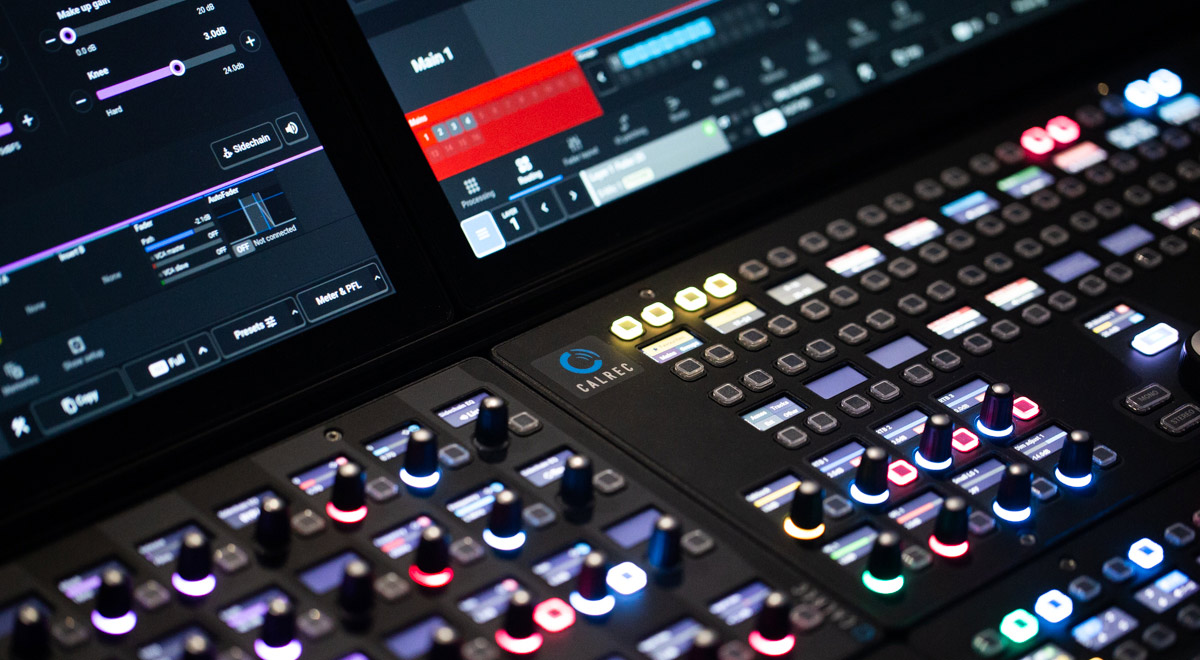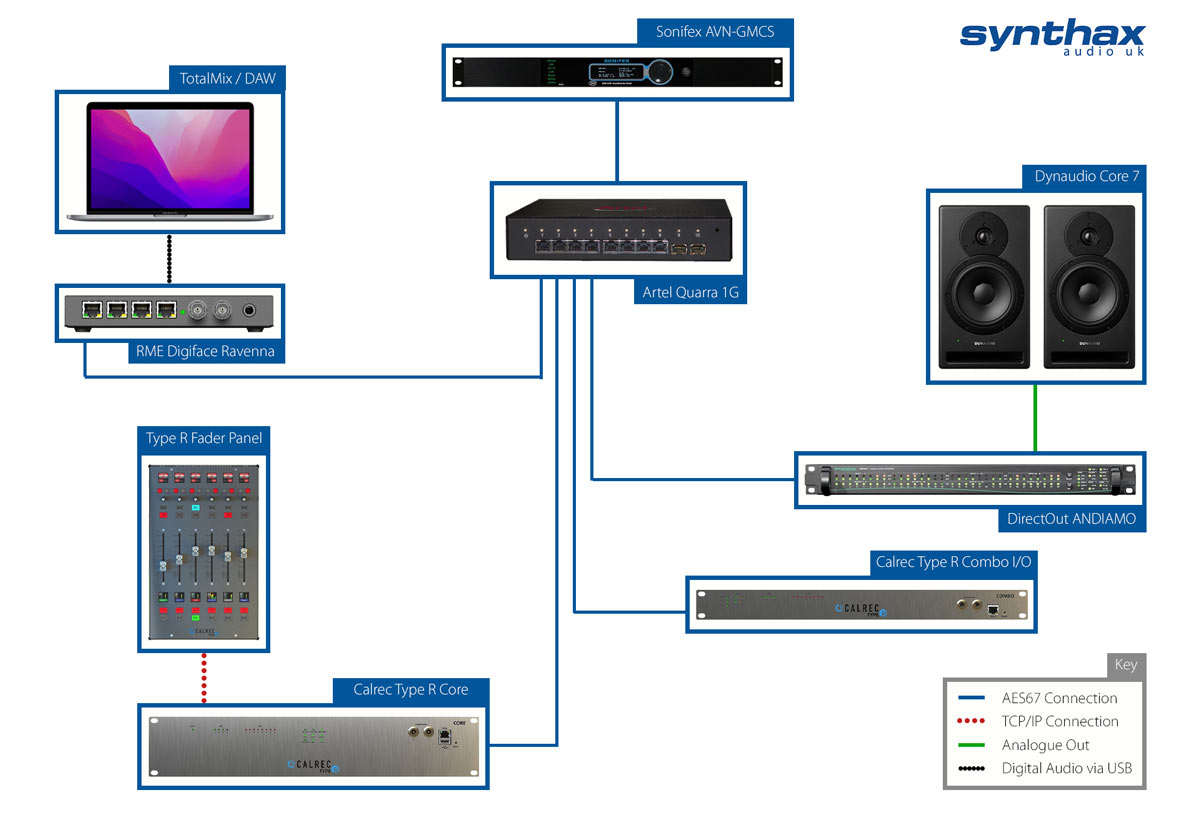Synthax Audio UK’s Simon Roome explains the benefits of using AES67 for audio networking in broadcast and other complex audio systems.
Synthax UK recently teamed up with our partners Calrec Audio to host a series of open days in support of their newly launched Argo console, alongside demonstrations of Calrec’s modular Type R.
With both consoles natively being AES67, Synthax UK’s Broadcast Sales Manager Simon Roome also took the opportunity to showcase a selection of the other AES67-compatible products we have in our catalogue.
As a UK supplier of AES67-compliant devices from Calrec, RME, DirectOut, Artel and Sonifex, Synthax Audio UK offers a wide range of products for creating modern, multi-use audio networking solutions across a number of different formats.
Digital Audio Evolution
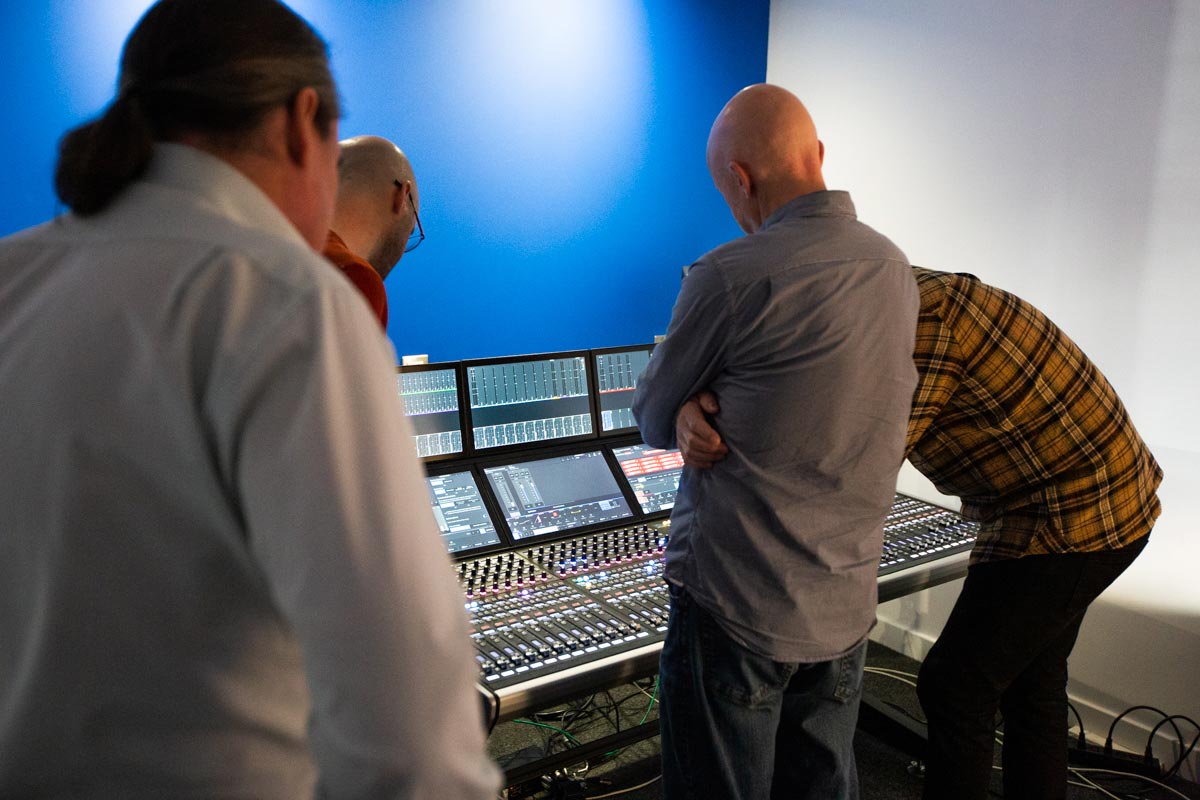 The professional audio landscape continues to be transformed by the ongoing evolution of digital audio technologies.
The professional audio landscape continues to be transformed by the ongoing evolution of digital audio technologies.
Long-standing formats such as ADAT and AES-3 are alive and well, whilst MADI’s digital point-to-point capabilities (providing up to 64 channels over distances of up to 2km) continues to power studios, live sound and location recording rigs worldwide.
Broadcast sound frequently requires even more flexibility in terms of routing and audio distribution, a problem solved by the emergence of AoIP technologies.
“Recent developments have moved these formats from point-to-point connections, to more distributable, networked formats such as [Calrec’s] Hydra 2, which still works fantastically for a large number of applications,” Simon explains.
“Although traditionally, many of these formats tended to be proprietary, and did not allow for the widespread connection of equipment from different vendors.”
As more general purpose AoIP-based formats – such as Dante and AVB – have gradually become more widely-accepted, we’re now seeing greater diversity and interoperability between devices from different manufacturers.
This allows for the building of more complex audio solutions, and perhaps more pertinently, more equipment choices for the engineer.
Among these IP-based formats is AES67, a standard that Simon explains is perfectly suited for the unique requirements of broadcast audio.
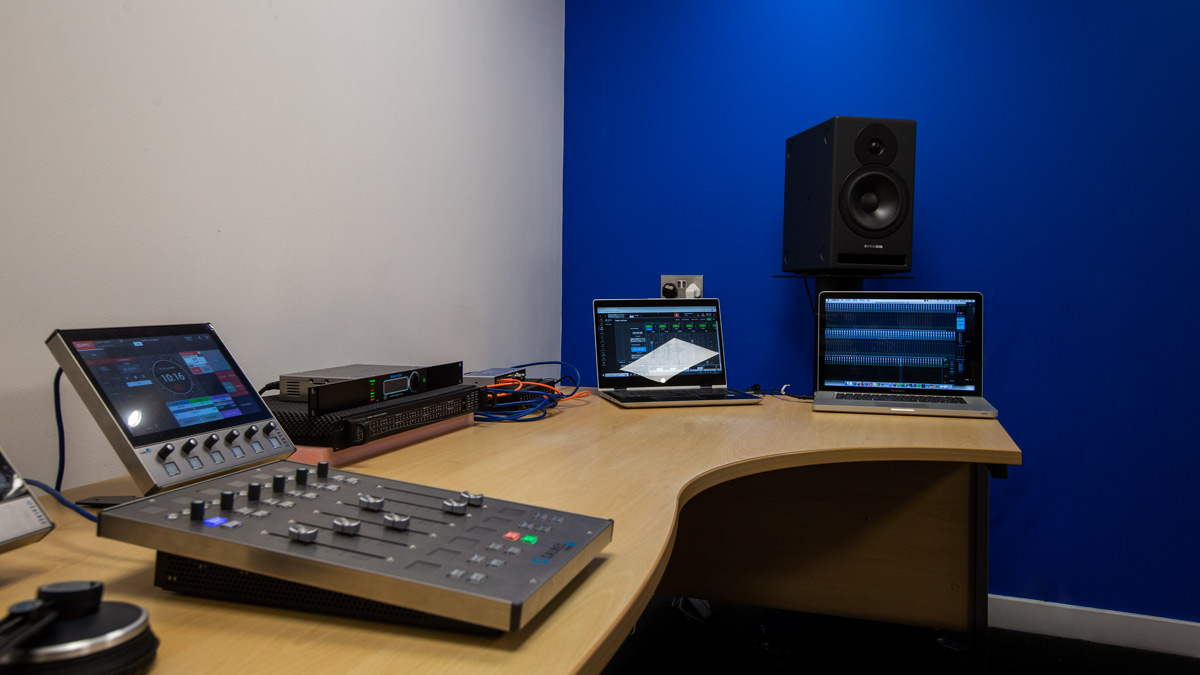 Why AES67?
Why AES67?
“An AES67 network is ideal where you would like audio to be created in different spaces and shared to many destinations” elaborates Simon.
“Because AES67 is, by design, a multicasting format, any system that regularly needs to have multiple end points receiving the audio simultaneously will feel the benefit of this type of solution.”
As noted above, broadcast audio is often a more complicated affair than other forms of audio engineering, requiring multiple feeds to be supplied to any number of different locations and users at any one time – from studios and control rooms, to Outside Broadcast trucks.
“By using a networked audio format such as AES67, audio can be presented onto a network and then consumed at multiple points around that network, simultaneously, without the need for a dedicated router to send that audio,” continues Simon. “This adds a useful degree of flexibility to the audio network.”
With some audio networks requiring extra peripherals for operation (such as proprietary routing hardware), creating a networked solution can be an expensive task. AES67 operates in a different way to other formats, allowing for the use of COTS hardware, and can be integrated with existing IP networks, without the need to create a separate network for audio.
“AES67 takes away the requirement for a central router to join all the equipment together,” Simon notes. “The network itself becomes the router, with all the audio connected to that network available to any end point configured to receive it.”
“This removal of the requirement for an audio routing system can provide an obvious cost saving.”
An AES67 Network Solution
The recent open day at Synthax HQ provided the perfect opportunity to configure a highly-flexible and harmonious network solution between Calrec’s latest generation of consoles and other AES67-compatible hardware available from our brands.
For the purposes of the demonstration, audio was sent from a multitrack DAW project on a laptop to the RME Digiface Ravenna audio interface, with powerful routing control via RME’s TotalMix software mixer.
Audio was then sent on to the Calrec Type R core and mixed via its fader panels, before being passed from the Type R to the DirectOut ANDIAMO Ravenna for Digital to Analogue conversion. The resulting analogue signal was then sent to a pair of Dynaudio Core speakers for monitoring, with a Calrec Type R Combo I/O box providing additional digital and analogue I/O.
At the centre of the network is an Artel Quarra 1G switch and a Sonifex AVN-GMCS, providing clocking for all network devices. The Artel Quarra 1G is used as a boundary clock, whilst the Sonifex AVN-GMCS operates as PTP (Precision Time Protocol) Grand Master Clock to provide all devices with PTP clock – a protocol used to synchronize clocks throughout a computer network.
Discovery of AES67 audio streams across the network is made simple thanks to widespread adoption of the NMOS IS-04 control protocol. This set of standards makes it straightforward to discover devices across the network, even when using devices from different manufacturers.
This setup demonstrates the flexiblity of an AES67 network – and the ease with which it can be scaled – freely passing audio between multiple elements regardless of the physical location of each device, which could be across any number of locations in a studio complex.
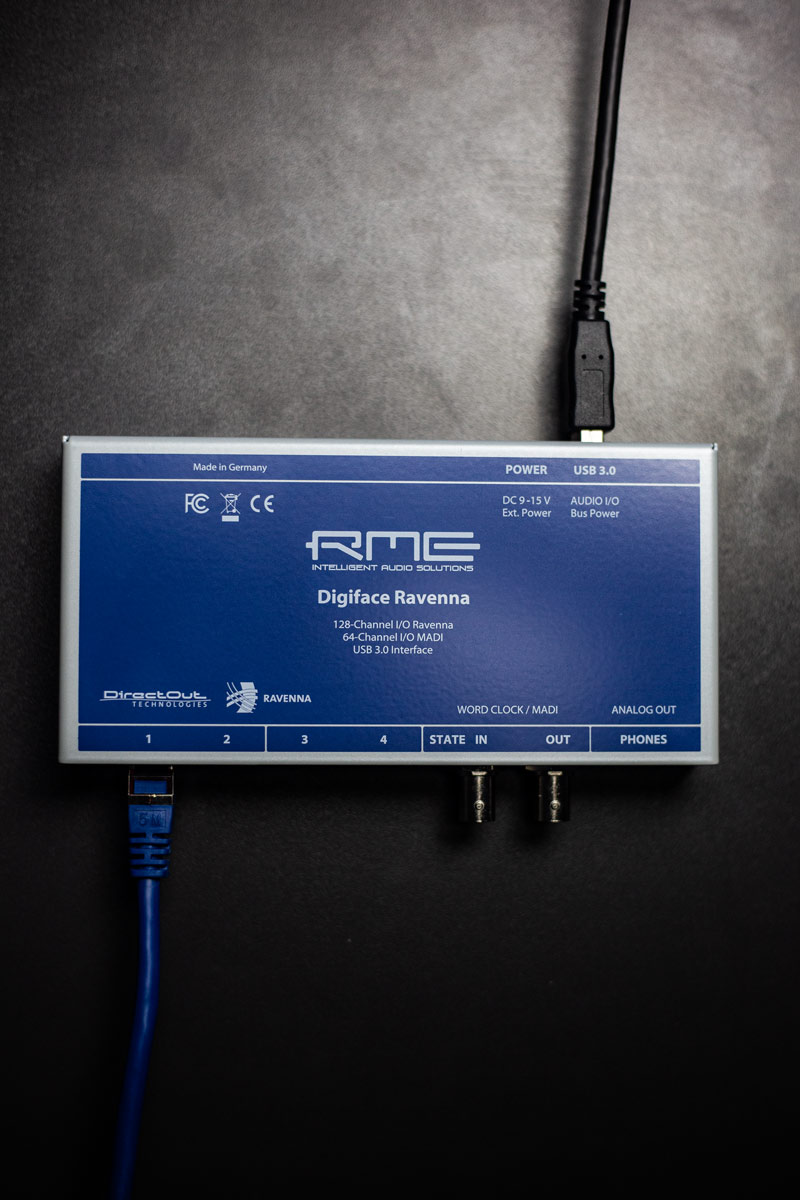 RME Digiface Ravenna
RME Digiface Ravenna
For interfacing with a PC or Mac, the pocket-sized RME Digiface Ravenna is an ideal AES67 counterpart.
Based on the Digiface Dante – RME’s ironclad Dante interface – the Digiface Ravenna is equipped with a RAVENNA module developed by DirectOut, and provides up to 128 channels of audio on an AES67 network (with a built-in headphone output / unbalanced lineout for monitoring).
Like all RME audio interfaces, the Digiface Ravenna also benefits from the powerful mixing and routing capabilities of TotalMix.
A software controller, digital mixing console and routing matrix all rolled into one, TotalMix allows for any input channel to be freely routed to any output channel, making it easy to create different submixes for routing back onto the network.
The Digiface Ravenna’s implementation of AES67 also makes clocking to the network’s PTP clock a straightforward process, as Simon explains.
“The Digiface Ravenna operates as a true AES67 node, with the ability to become the GM dependant on the Best Master Clock Algorithm.”
The Best Master Clock Algorithm, or BMCA, is an aspect of the AES67 protocol that helps decide the clock master. Any AES67-compliant device is capable of being clock master, as part of the standard.
The BMCA chooses the device that will operate as Grand Master clock based on the quality of the clock signal, but also offers the option to specify one device, such as the Sonifex GM AVN-GMCS.
See the full range of RME Audio Networking devices
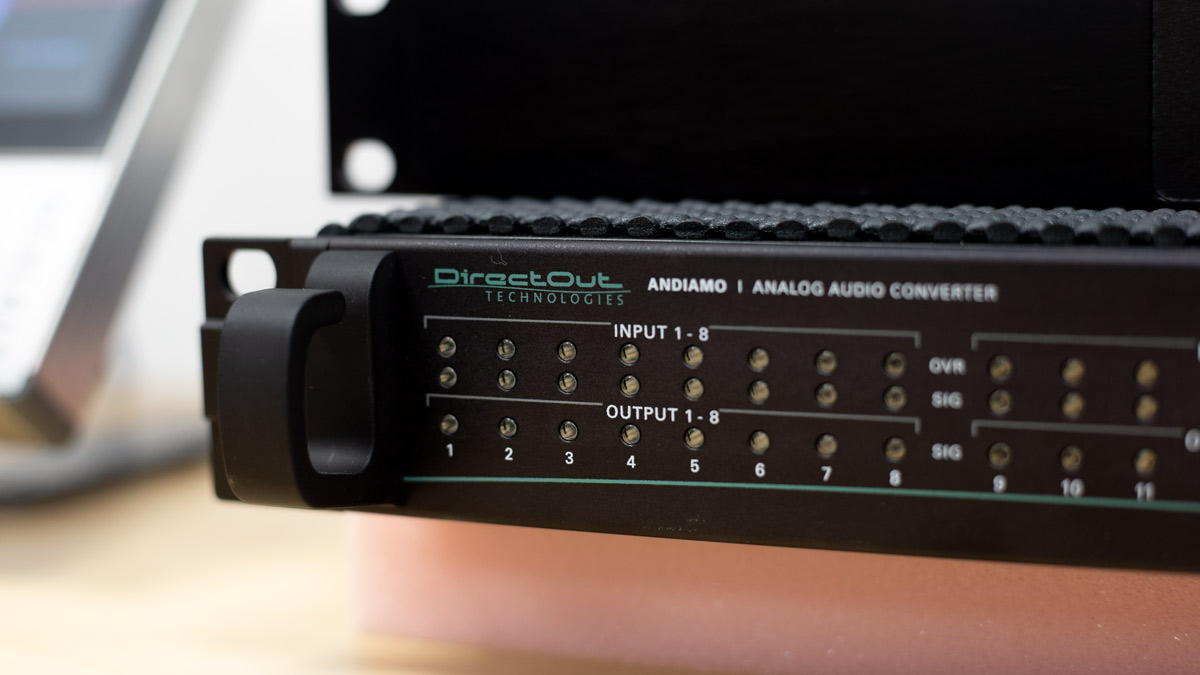 DirectOut ANDIAMO
DirectOut ANDIAMO
DirectOut’s third generation ANDIAMO is a powerful, high-end 32-channel AD/DA converter based on the extremely high sonic quality of DirectOut’s modular PRODIGY Series.
Offering simultaneous conversion of 32 audio channels from analogue to digital (and vice-versa), the latest version features newly designed AD/DA converters, multiple network-based audio options, and extensive remote control via Globcon software.
The Andiamo is available in three variants, the first of which is a 32-channel MADI <> Analogue converter, offering incredibly high quality AD/DA conversion to and from MADI via dual SFP modules.
Alongside the MADI Andiamo are two further networked options, providing either Dante or Ravenna/AES67. Opting for either network audio variants brings the total channel count of the Andiamo to an impressive maximum of 288 inputs and outputs.
We used the Andiamo simply for AES67 to analogue conversion in our example, providing a stereo monitor feed from the network to a pair of Dynaudio Core 7s. The ANDIAMO is of course capable of far more however, as Simon explains.
“The Andiamo provides an interface between the AES67 network and a number of analogue devices, as well as a conversion from AES67 to MADI,” adds Simon. “With 32 line level inputs and outputs, it’s a fantastic option for connecting comms systems or monitoring systems.”
Learn more about the DirectOut ANDIAMO
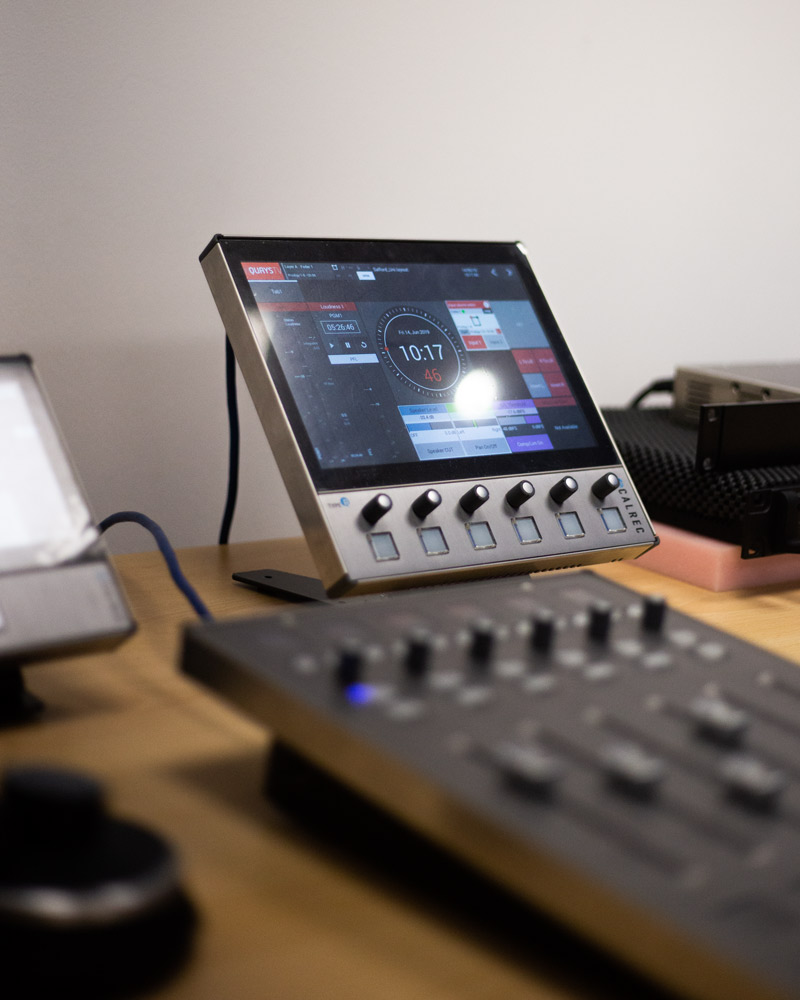 Calrec Type R
Calrec Type R
The Calrec Type R is a broadcast mixing console with a highly flexible modular design. At the heart of the system is a 2U Core, which is capable of powering up to three independent mixing environments.
Alongside the Core, any combination of fader panels, small and large software panels, – as well as the new Type R Talent Panel – can be used to create a customised control setup for use in both TV and Radio.
The Type R’s modular design also makes it an ideal mixing system for situations where space is at a premium, or when only a smaller number of components are required.
The system can equally be expanded with additional components at a later date, and can easily communicate with Calrec’s larger consoles such as the Argo, which is powered by Calrec’s audio processing engine, ImPulse.
As both ImPulse and the Type R Core are native AES67, connecting a Type R system with a larger desk is a straightforward process, making the Type R an ideal sub mixer or grams desk, as well as an appealing proposition for a wide range of other broadcast audio scenarios, as Simon outlines.
“The small footprint, highly configurable surface components and lower price point, allow the Type R to offer expansion of the large format console when space and cost are important. The same factors mean that the Type R offers a perfect solution as a standalone console for radio installation and smaller TV galleries.”
Discovery of Calrec devices is made simple with Calrec Connect, a free stream manager which manages every audio stream and device on a network.
“Calrec AES67 products are automatically discovered and populated into Calrec Connect, so connecting their streams is a simple process,” Simon adds. “This means that the Type R is ideal as a partner for a larger Calrec console using ImPulse processing, with the I/O boxes on the network completely visible to both consoles.”






















